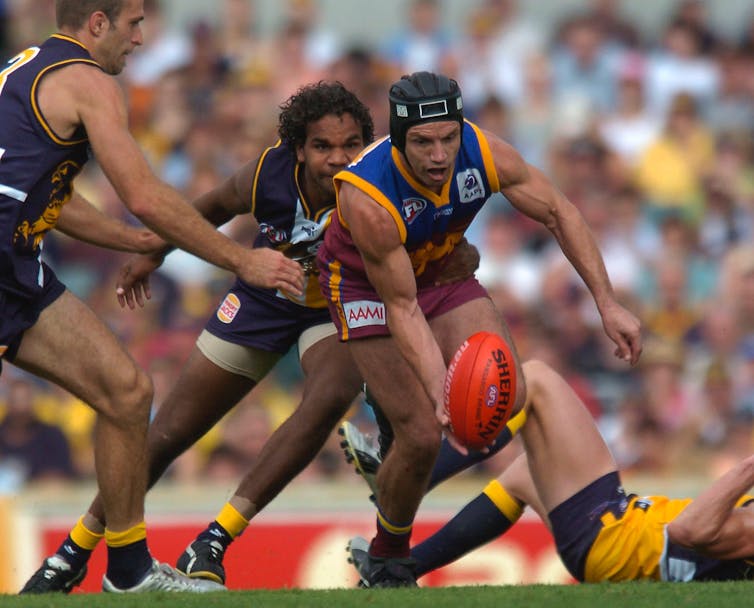Recent media and expert commentary has called for more research into brain injuries sustained by footballers. The focus has been on the need for a long-term study of the effects of concussion and chronic traumatic encephalopathy (or CTE, a degenerative disease of the brain) in professional players after they retire.
There’s no doubt that the safety of all sports players needs to be the focus of more research in Australia. In fact this is already recognised as a major public health goal. But to ensure research investments lead to to real sports injury prevention gains, we need a strategic and rigorous approach to this research. And it must build on current scientific knowledge.
The media often quotes sports injury studies from the United States and there’s an impression that little research has come from Australia. This is quite wrong. As researchers who’ve been working in the area since the 1980s, our research (and that of others) has already directly led to improved safety practices in Australian sport and international guidelines for the management and detection of concussion in sport.
So what has our research told us about how to prevent, reduce and manage concussion on the field?
Concussion occurs when impacts to the head exceed the level of human tolerance. There’s no one cause of concussion in sport. Players’ skill, technique and the rules of the game all play a role. Many head injuries in sport can therefore be prevented through the modification of game rules and techniques such as outlawing head-high tackles in football.

Helmets are often suggested as a simple way to reduce the rates of head injury in football and rugby. Indeed, protective helmets may prevent injuries in activities such as cricket, equestrian sports and bicycling. However, protective helmets are yet to be proven to prevent head injuries in the common football codes in Australia.
Concussion can be difficult to diagnose, particularly on the sporting field, but physicians now have access to evidence-based guidelines to assist with the management and diagnosis of player concussion. It’s important that concussed players only return to play after they’ve received medical clearance. Otherwise, they may be at risk of further concussion or complications.
Knowledge about what can be done to prevent concussion, when to return to play and the actual uptake of preventive measures, is influenced by the attitudes and beliefs of players and coaches – and this trickles down to the community. It’s important that parents have accurate information about injury risk and prevention. Simply preventing children from playing sport isn’t the answer to injury prevention, and denies children the health benefits of active lifestyles.
Future research
Of course, we still need to build this current knowledge base. There’s no doubt that monitoring the long-term outcomes of professional players with concussion, both during and following their playing career, has to be a future research priority in Australia. And our team is already undertaking this research.
But we still need to know much more about the actual biology of mild traumatic brain injury: how it manifests, how the condition progresses (if at all) and whether we can improve the detection of brain damage through better methods of brain scanning.
We currently have very little information about what the general sporting community knows about correct concussion management and prevention, and how it’s currently managed. If we can identify what helps or hinders the implementation of concussion management and prevention guidelines, then we’ll be able to enhance the uptake and sustainability of safety programs in community sport.
We will also need to improve how we disseminate the latest scientific evidence about concussion prevention to the general community, including through social media.
Most importantly, if we can identify new strategies to prevent concussion and other head injuries from occurring in the first place, we will also have eliminated the risk of long-term head injuries.
Far from lagging behind the rest of the world, Australia’s sport concussion researchers are already setting the standard for international research. To maintain Australia’s international leadership, future research will need to be even more multi-disciplinary and co-operative across research groups.
It’s critical that this research is conducted in partnership with peak sports bodies from the outset. Otherwise, we run the risk of producing research outcomes that don’t work in the long term and aren’t adopted as routine safety practices.

